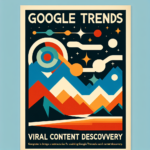Introduction to Ascending the Ranks with Consumer Insight
Welcome to this exhaustive guide on consumer insight in digital marketing! Are you curious about how understanding consumers can boost your business? Or maybe you’re ready to elevate your marketing strategies using data and insights? Well, you’ve landed on the right page!
In this piece, we’ll explore what consumer insight entails and how it shapes today’s marketing strategies. We’ll guide you through the process of collecting, analyzing, and harnessing data and insights, taking a closer look at advanced tools and technologies that aid in this endeavor.
With some real-world examples and case studies from top brands like Forbes, Amazon, and Walmart, we’ll provide you with concrete insights. Ready to take your business strategies to the next level? Let’s get started!
Creating Consumer Insight in Digital Marketing
What is Consumer Insight?
Consumer insight is the understanding of customers’ behaviors, preferences, and needs. This knowledge helps businesses tailor their marketing efforts to better serve their audience.
Understanding these insights can boost customer satisfaction, increase engagement rates, and improve overall business strategies.
Collecting Data
To create consumer insight, you need to gather data from various sources. Here’s how:
- Surveys: Conduct online and offline surveys to gauge customer opinions.
- Social Media: Monitor comments, likes, and shares to see what resonates.
- Website Analytics: Use tools like Google Analytics to track user behavior on your site.
- Customer Feedback: Collect reviews and feedback for direct insights.
Analyzing Data
After collecting data, the next step is to analyze it. Look for patterns or trends such as:
- Demographic Preferences: Age, gender, and location data can reveal trends.
- Behavioral Insights: Understand how consumers interact with your brand online.
- Product Feedback: Identify what features customers enjoy or dislike.
Using Technology
Leverage technology to gain deeper insights. Some tools include:
- CRM Systems: Customer Relationship Management software for detailed profiles.
- Social Listening Tools: Platforms like Hootsuite can track brand mentions.
- Data Visualization: Tools like Tableau present data in an understandable way.
Implementing Insights
Use consumer insights to inform your strategies:
- Personalized Marketing: Tailor your campaigns to specific audience segments.
- Product Improvement: Modify products based on feedback for better satisfaction.
- Customer Service: Enhance service protocols to address common concerns.
Case Studies and Real-World Applications
Explore how companies utilize consumer insights to boost performance. For example, Forbes often features how top brands employ data analytics to improve their reach and customer engagement.
Understanding and applying consumer insights help companies stay competitive and meet their customers’ evolving needs.
Summary Table of Key Steps
| Step | Description |
|---|---|
| Data Collection | Gather information through surveys, feedback, and analytics. |
| Data Analysis | Identify trends and patterns in consumer behavior. |
| Technology Use | Leverage CRM systems and social listening tools. |
| Implementation | Apply insights to enhance marketing and product strategies. |
Becoming adept in creating consumer insights is a fundamental skill for modern marketers. It requires a combination of data collection, analysis, and strategic application to truly understand and anticipate customer needs.
Refining Strategies with Customer Insights
Expanding on Consumer Insight
Undoubtedly, consumer insight is the cornerstone for successful marketing strategies. However, the essence of insights lies not only in understanding customer behaviors, but also in predicting them. Businesses can leverage predictive analytics to anticipate trends and preferences, thus giving them a competitive advantage.
Further Methods for Data Collection
Beyond the mentioned methods, integrating customer relationship management (CRM) data with external insights can provide valuable context. External insights might include:
- Competitor Analysis: Understand strengths and weaknesses of rival offerings.
- Industry Trends: Keep abreast of general market shifts and changes.
- Sales Data: Use past and current sales figures to anticipate future trends.
Advanced Data Analysis
Data analysis should not only identify patterns but also help in predicting future behaviors. Advanced techniques like predictive analytics and machine learning can augment your capabilities. For instance:
- Predictive Analytics: Use historical data to forecast future customer behaviors.
- Machine Learning: AI can identify complex patterns humans might miss.
Advanced Use of Technology
More sophisticated tools are now available to turn raw data into meaningful insights:
- Heatmap Software: Understand users’ interaction with website or app.
- AI Chatbots: Learn from customers’ inquiries and responses in real-time.
- Big Data Platforms: Big data solutions can handle large data volumes and offer complex analysis.
Strategically Applying Insights
Consumer insights are most effective when used to enhance all aspects of the business:
- Pricing Strategy: Price products or services accurately to match market demand.
- Supply Chain Management: Use insights to monitor and forecast demand, manage inventory efficiently.
- Employee Training: Offer training with insights on customer concerns, expectations to boost customer service.
Case Studies on Predictive Consumer Insight
Several businesses leverage predictive analytics to shape their marketing strategies. For example, Amazon uses sophisticated predictive algorithms to recommend products, greatly enhancing its cross-sell and upsell strategies.
Advanced Steps for Using Customer Insights
| Step | Description |
|---|---|
| Predictive Analytics | Use historical data to forecast future consumer behavior. |
| Machine Learning | Employ AI to recognize complex patterns and trends. |
| Advanced Technology Use | Implement heatmap software, AI chatbots, and big data platforms. |
| Strategic Application | Use insights to refine pricing, supply chain, and employee training. |
Mastering customer insights involves more than understanding current trends. It involves anticipating the future and utilizing advanced technologies and strategies. The successful integration of customer insights can lead a business to unprecedented growth and success.
Consumer Insights’ Role in Business Strategies
What are Consumer Insights Used For?
Consumer insights are essential for creating strategies that align with customer needs. They help businesses make informed decisions by identifying and predicting consumer behavior. This understanding enables companies to:
- Enhance Customer Experience: Tailor experiences to match customer expectations and enhance satisfaction.
- Guide Product Development: Use insights to innovate and improve products that meet the customer’s latent needs.
- Inform Marketing Strategies: Craft targeted marketing campaigns that resonate with specific demographics.
- Optimize Resource Allocation: Focus efforts on high-impact areas, reducing wasteful spending.
- Enhance Brand Loyalty: Trust grows when businesses anticipate and fulfill consumer needs effectively.
Refining Market Segmentation
Insights inform better market segmentation, allowing businesses to:
- Identify Niche Markets: Discover underserved segments to target effectively.
- Develop Customized Offers: Create tailored promotions and deals for distinct groups.
- Build Resonant Messaging: Communicate in ways that deeply connect with each segment.
Improving Customer Retention
With consumer insights, companies can enhance customer retention by:
- Identifying Churn Indicators: Recognize precursors to customer loss and address them proactively.
- Personalizing Loyalty Programs: Offer rewards and programs that appeal directly to consumer preferences.
- Improving Support Services: Tailor support channels and responses to meet customer needs effectively.
Utilizing Omnichannel Strategies
Consumer insights support an omnichannel approach by ensuring:
- Seamless Integration: Provide a consistent brand experience across all customer touchpoints.
- Precise Targeting: Use insights to deliver relevant messages through every channel, from online to in-store.
- Enhanced Analytics: Track and interpret customer interactions across different platforms.
Real-World Applications
Insights drive practical applications that position companies competitively. For instance, brands such as Walmart effectively use customer data insights to tailor inventory and create targeted advertising campaigns, resulting in improved customer satisfaction and stronger sales performance.
By strategically applying consumer insights, businesses can transform raw data into powerful actions that meet the evolving demands of their customers, leading to long-term success.
Advertising with Consumer Insights
Examples of Insights in Advertising
Consumer insight is essential for crafting impactful advertising strategies by aligning them with consumer needs and preferences. These insights can guide everything from messaging to channel selection. Here’s how they can be applied:
1. Emotional Resonance: Brands can use insights to identify emotional triggers that drive purchasing decisions. For instance, a company marketing eco-friendly products might tap into insights showing their target audience values sustainability to create a campaign that evokes feelings of environmental responsibility.
2. Channel Optimization: Insights may reveal that certain demographics predominantly use specific platforms. A brand targeting millennials could learn through insights that Instagram and TikTok are popular platforms and should prioritize these channels for ad spend and creative content.
3. Timing and Context: By understanding consumer behavior patterns, companies can time their ads for maximum impact. For example, an insight might suggest a particular audience spikes in online activity during evenings or weekends, so brands can schedule ads accordingly for higher engagement.
Advanced Tools for Developing Insights
Apart from traditional data collection methods, companies can harness advanced technologies for deeper insights. Examples include:
– Sentiment Analysis: Tools that process social media comments or product reviews to understand consumers’ emotional responses towards brands or products.
– Eye-Tracking Studies: By analyzing where users focus their attention on a webpage or advertisement, brands gain insight into what elements attract or distract consumers.
– Geo-Location Data: Businesses can utilize location-based insights to tailor advertisements based on where their target audience spends their time.
These advanced methods not only refine insights but also enhance the precision of advertising strategies to better connect with the audience.
Integrating Consumer Insights in Creative Processes
Using insights effectively means involving them in every stage of the creative process:
– Concept Development: Insights about consumer aspirations or pain points can spawn creative concepts that resonate deeply.
– Content Creation: Tailor the ad content to reflect the language, imagery, and values derived from consumer insights, ensuring relatability and authenticity.
– Testing and Feedback: Use insights to test different creative versions with target segments to refine messaging for optimal performance.
By leveraging insights throughout the creative process, companies can produce advertising that not only reaches but also resonates with their intended audience.
Successful Applications in Advertising
Industry giants masterfully apply consumer insights to boost their advertising success. For instance, Coca-Cola frequently uses consumer insights to localize its advertising, ensuring that its messaging and imagery align with regional cultural values and preferences, which has helped maintain its global appeal.
Utilizing these strategies enables businesses to refine their advertising efforts, ensuring they deliver meaningful, targeted, and effective communications that meet consumer expectations and drive business success.
Conclusion: Translating Consumer Insights into Marketing Excellence
In a world ruled by data, understanding consumer insight proves to be a driving force in paving the roadmap to marketing success. By meticulously collecting data through numerous channels and dedicating comprehensive analysis to this information, businesses can unearth valuable trends and patterns in customer behavior. This can subsequently be used to refine marketing strategies, tailor product offerings, and fine-tune customer service protocols– each an essential aspect of remaining competitive in the market landscape.
Further pushing this boundary, modern marketers are now leveraging predictive analytics and advanced technologies, such as machine learning and big data platforms. They use these tools to anticipate future trends and adjust strategies proactively, hence staying one step ahead. Meanwhile, companies are also adopting tools like heatmap software and AI chatbots to facilitate the real-time collection and understanding of customer data. By integrating this information into all aspects of the business, predictive consumer insights can catalyze unprecedented growth and success, as seen in companies like Amazon.
With these insights effectively translated into actions, companies can better fulfill their customers’ rapidly evolving needs, leading to elevated customer satisfaction and brand loyalty. Techniques like market segmentation, customer retention initiatives, and omnichannel strategies, have all proven valuable in achieving this aim. Consequently, armed with these insights, businesses can hone their advertising strategies, making them exceptionally relatable and impactful, as seen in the case of Coca-Cola. Ultimately, with a data-driven consumer insights approach, the bounds to marketing success seem limitless.
Frequently Asked Questions – FAQs
What are consumer insights?
Consumer insights refer to the understanding of customer behaviors, preferences, and needs. They are derived from analyzing collected data and are vital in enhancing customer satisfaction, engagement rates, and overall business strategies.
How can businesses collect consumer insight data?
Businesses can collect data through several methods, including surveys, social media monitoring, website analytics, and customer feedback. Advanced technologies such as CRM systems, social listening tools, and data visualization tools can also aid in this process.
How are consumer insights used in marketing strategies?
Consumer insights can inform personalized marketing campaigns, product improvements, and the enhancement of customer service protocols. They also facilitate improved decision-making, allowing businesses to focus resources on high-impact areas, thereby reducing wasteful spending.
What benefits can a business gain from employing predictive analytics and machine learning?
With predictive analytics and machine learning, businesses can anticipate future trends and adjust their strategies proactively. They can also be used to recognize complex patterns humans might miss, which can provide a competitive advantage in understanding customer behavior and tailoring strategies accordingly.
Can consumer insights inform advertising strategies?
Absolutely! Consumer insights can guide everything from advertising messaging to channel selection. They can help brands understand their audience better and create communications that not only reach, but also resonate, with their target consumers.






